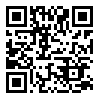
 , Reza Ebrahimzadeh-Vesal
, Reza Ebrahimzadeh-Vesal 
 , Mohammad Hosein Modarressi
, Mohammad Hosein Modarressi 
 , Ali Zekri
, Ali Zekri 
 , Mohammad Nouri *
, Mohammad Nouri * 

Background: The study of specific genes expressed in the testis is important to understanding testis development and function. Spermatogenesis is an attractive model for the study of gene expression during germ cell differentiation. Spermatogenesis associated-19 (Spata-19) is a recently-identified important spermatogenesis-related gene specifically expressed in testis. Its protein product is involved in sperm cell development and reproduction. In this report we examined the expression of Spata-19 mRNA in mouse testis, fetus, and cell lines.
Methods: Reverse transcription-polymerase chain reaction (RT-PCR), nested PCR, and PCR-restriction fragment length polymorphism (PCR-RFLP) were used to analyze Spata-19 mRNA expression in different stages of mouse testis development, mouse fetus, mouse embryonic fibroblasts (MEF), mouse embryonic stem cells (mESC), Sertoli cells, and NIH/3T3 cells.
Results: We identified a novel splice variant of Spata-19 in the mouse genome that it is expressed in the fetus and after the meiotic phase of spermatogenesis, and over-expressed in the post-meiotic stage of mouse spermatogenesis. This novel splice variant was absent in five days old mice testis, mESC, MEF, Sertoli, and NIH/3T3 cell lines.
Conclusion: The Spata-19 has a large novel splice variant in mouse testis that is expressed beyond meiotic phase of testis development. We suggest that this new Spata-19 mRNA variant might be involved in mitochondrial maintenance in sperm cells, and might be correlated with androgen secretion and male fertility.
Received: 2013/10/21 | Accepted: 2013/12/10 | Published: 2014/04/30
| Rights and permissions | |
 |
This work is licensed under a Creative Commons Attribution-NonCommercial 4.0 International License. |
